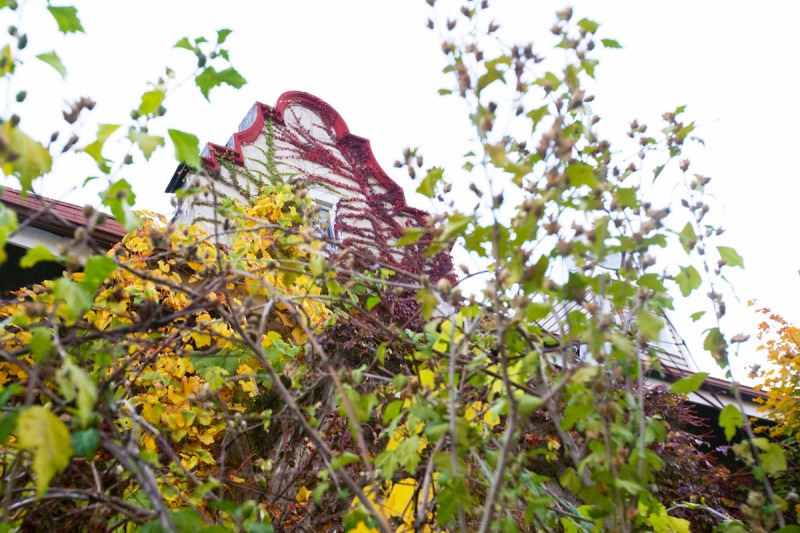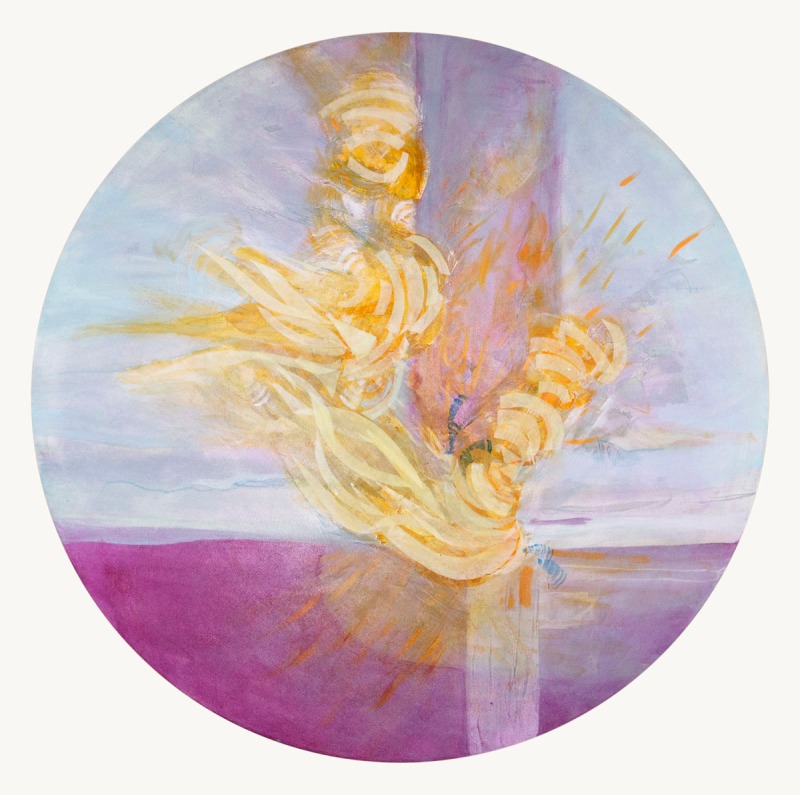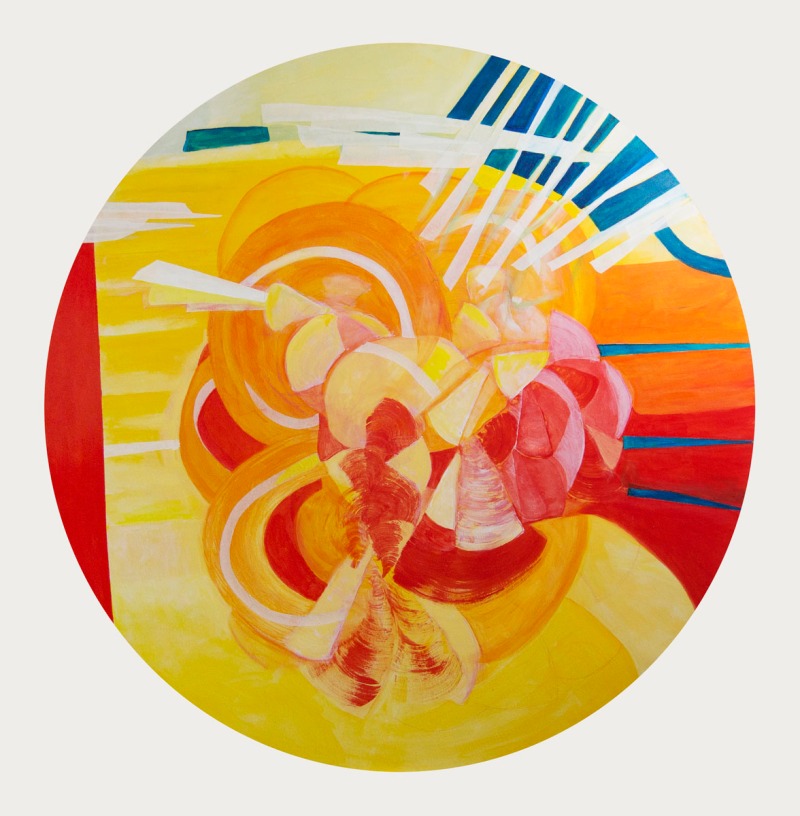
Betty Blayton Taylor in studio, Bronx, NY, 2016
“I think that every child should have an opportunity to explore the arts, just like they have an opportunity to learn how to write and to count. A youngster who has had exposure to the arts is a youngster who is going to be more creative, more capable of learning; will have more enthusiasm for learning and particularly, will be in a position to explore potential, as opposed to the rote learning that goes into A-B-C. If you allow a child to have his own reflexive thought – his own process in terms of exploring his own symbolism – this is the window to becoming a creative person.”
– Betty Blayton Taylor

Betty Blayton Taylor (1937-2016), born in the surreal setting of segregated Williamsburg, Virginia, influenced generations of art makers and art aficionados. Betty found success shortly after her arrival in New York City in the ’60s. She was featured in the film, Five, alongside Romare Bearden and others.
Betty’s exceptional life journey, which she humbly brushed off as “just sort of happened to me,” reached beyond her personal practice. She co-founded and maintained years of leadership positions at institutions that brought the arts and arts education to neighborhoods otherwise deprived of such spaces. Betty’s drive enabled the existence of The Studio Museum of Harlem, the Children’s Arts Carnival and Harlem Textile Works. The CAC shaped hundreds of children into successful and creative contributors to society.
New York 2016

The walls and windows of Betty’s corner house were covered in a dense lace of vines and blossoms. Amidst this crimson and green I found the doorbell that summoned a bright, smiling face over the balcony.
“Is that Mari?” she asked.
Thus marked the beginning of my first and last encounter with Betty Blayton Taylor.
Betty was warm and vivacious during our meeting. It was easy to recognize her trademark, broad smile although, due to health complications, she was smaller than images in the public domain belied. Her disposition was a mixture of matter-of-fact no-nonsense and patient kindness.
Betty’s interview was conducted on a round table piled with layers of papers and criss-crossed occasionally by brazen cats. Her lifelong friend and fellow artist, Michael Kelly Williams was also present and tuned into Betty’s outrageously humorous recollections. Occasionally, Betty would tap into Michael’s reservoir of memories when a specific name or reference evaded her.
It was a pleasure to meet Betty and a difficult pill to swallow the news of her passing so soon after this encounter. Below I share with you her memories combined with those of her loved ones.
Williamsburg, Virginia 1937
Betty Ann Blayton, born on July 10, 1937, was the second of four children born to Alleyne Houser Blayton and Dr. James Blaine “Jimmy” Blayton. Her elder sister by only fourteen months, Barbara Jean Blayton, took one look at her mother swaddling the new infant and marched right up to her to rid the family of this fresh nuisance.

Betty’s father, Jimmy
Both parents were well-educated civic-minded folks who forbade apathy. Their children were encouraged to take and defend their own positions on a regular basis. Betty’s father, Jimmy was a prominent physician who opened clinics and the first hospital for African-Americans in his district. Her mother, Alleyne, who Betty referred to as a “bantam rooster”, labored tirelessly for educational opportunities for her own children as well as the children of her district.
“I know that’s a term for a male,” Betty said. “She was very aggressive in that segregated situation.”

Betty’s mother, Alleyne
The girls, Betty and Barbara, grew up first in Williamsburg, then in the country town, Grove. They attended the all-Black, public school, Bruton Heights until 8th grade. Betty credited the nurturing she received at Bruton Heights as fundamental to the development of her identity.
“There was a conscious effort that we understood what our history was. That was stabilizing.”
I want to be an artist!

Each morning, Alleyne would dutifully dress the girls in matching ruffles and ribbons to send them to school. Although they were dressed like two peas in a pod, their personalities were polar opposites. While Barbara was determined to follow each rule laid out before her, Betty never made it back home with so much as a braid or ribbon in her hair. Every now and then differences would flare up between the sisters and an all-out battle would ensue. Barbara, the goody-two-shoes of the pair, recalled through hearty laughter, that even though she would arm herself with something like a broom, she would still end up running from Betty who would come at her fiercely with nothing more than fingernails and a loud screech.

Barbara Blayton Richardson, Betty’s sister
While easygoing Jimmy felt that the child should be left to be whom she was, Alleyne strove to keep her daughter in line with her highest expectations and notions of propriety. Wherever a line was drawn, it seemed that Betty could find a way to step just a little over it.
“I guess you could say I started primarily as a painter because I thought that murals were wonderful, from about age 4! My mother didn’t agree with me. She was kind enough to give me crayons. She was also very upset about the fact that I refused to use them on paper. I used the walls.”
Betty always knew that she was going to be an artist although no one in her family saw art as a fruitful or realistic profession. They wouldn’t dream of attaching the label “artist” to a loved one.
“I used to say I wanted to be an artist and [my mother] didn’t know what that meant. She gave me the violin. I hated it. It sounded terrible. She tried dance and I was always very clumsy so that didn’t work. And I kept saying, I want to be an artist!”
Sedalia, North Carolina, 1950

Betty continued her education at the prestigious Palmer Memorial Institute in Sedalia, North Carolina. Founder, Dr. Charlotte Hawkins Brown, guaranteed parents’ academic placement for their children based on their highest aspirations.
“She was able to do that in most instances because we spent a lot of time taking tests. You spent the second half of your senior year just taking tests, whatever was required to go wherever it is you wanted to go. Smart lady!”
Later, at the Children’s Art Carnival, Betty and her associates remained inspired by Dr. Brown’s approach. “We made sure [the kids] had their portfolios. We would find out what it was that [schools] were looking for and then we would have the artists work with the kids on that.”
Syracuse, New York, 1955

After Palmer, Betty double-majored in Painting and Illustration at Syracuse University at the expense of the State of Virginia. After the 1954 Brown v. Board of Education ruling, Virginia fought vigorously against the desegregation of public schools so Betty was not permitted to attend the University of Virginia. The unstoppable Alleyne ensured that her daughter’s education was funded by the state that refused to provide it.
Washington, D.C., 1959

From Syracuse, Betty made her way to her father’s alma mater, Howard University, to begin work and graduate school.
“My father told me it was all over when I graduated and he hoped I was lining up some things to take care of myself. So I had nightmares the second half of my last semester trying to figure out how I was going to pay my rent. I applied for jobs and I got this job at Howard.”
Betty’s graduate studies were contingent on her work with the department head, James A. Porter. Her uncertainty about what to do in graduate school combined with her certainty that she did not want to carry out Dr. Porter’s tasks, meant that Betty declined the position and did not pursue a Master’s degree.
“I didn’t think it was all that important at that time. Today I would encourage the artists, if they can, to go on ahead and get their Master’s because it makes a big difference in their ability to teach at the university level.”
Betty’s next stop was the federal government.
“I was a GS3. That’s about as low as you can get!” She joked. She worked in the illustration department of general services. “I had one illustration job which was to do something for transportation and I was into abstraction. So I was doing lines and they were like no, you have to have trains and planes. I absolutely hated it!”
Betty’s living situation wasn’t much happier.
“I had an apartment that was large enough for me to share with a schoolmate that I thought that I had treated badly in high school. I really felt guilty about it. So I let her come stay with me.
And of course, she and her friends took over my apartment. I would come home from work and they would be in my studio. My work was a mess and my house was a mess. I told my mother I gotta get out of DC!!”
St. Thomas, 1960

Betty went on to enjoy a teaching job in St. Thomas for a year.
“I did a lot of interesting things with the kids. I had Ninth Grade, Homeroom and I taught all of the high school classes. It was fun because you know, we could go make sandcastles in Charlotte Amalie!”
Almost England, 1961 and onward
Betty signed a contract to teach the equivalent of high school in England at the end of her year in St. Thomas. A developer convinced her that she “needed to know what Europe was about.” She traveled to New York City for the summer but a couple of friends – Martha Nurse and sculptor Elaine Rap – changed her life’s course once again. Elaine introduced her to the charming Arnold Prince, who, she was assured, would “teach her to carve in no time.”
“I came. I signed up for the Art Students League. I met Arnold Prince and all of the sculpture gang. That was fun times. We would end up going up to Vermont to get the stone. Then we had to figure out if the stone would go through the floor when we got back!”
Betty then worked with the renowned, Japanese abstract sculptor, Minoru Niizuma. Although Betty has lost track of some of her completed sculptures she donated several partially finished pieces to a friend, Vicky Gholson, for use in the Senior Sculpture Garden in Harlem.
Betty saw herself as part of a family of artists, a group that loosely includes “just about every African-American artist in New York City over the age of forty”. She took great pride in the many successful students who passed through the Children’s Art Carnival, including Michael Kelly Williams, Steve Mayo, Selwyn Goldborn, Zevilla Jackson Preston, Jose Ortez and others. The most famous Carnival alumnus is Jean-Michel Basquiat.
Betty also recalled the first artist-in-residence at The Studio Museum, renowned Trinbagonian artist, LeRoy Clarke.
New York City, 2016
All is one

Alongside her enviable network and impressive list of achievements, Betty’s extraordinary legacy is also firmly preserved in her artwork. It is there that we can experience the journey of this soul.
“Inasmuch as the paintings, for the most part, are the result of meditation and self reflective thought, I would hope that the viewer would come to them open, to be able to meditate and get a personal response to what they’re looking at.”
The driving force behind her creativity was her preoccupation with life’s mysteries.
“I have been fascinated with who we are, why we are, what we’ve been, what we’re supposed to become, metaphysics and philosophies and anthropology.”
She worked with oils, oil collages, acrylic, acrylic collages, sculpture and printmaking. Her technique, as she would put it, was play. A piece would come about through “the process of playing with the materials, finding what works, what makes you happy.” My visit to her studio offered me a preview of a work in progress – a large, circular canvas dominated by warm tones. On closer inspection, one could discover delicate inlays of rice paper.
When painting, she said, “I did a lot of meditation and contemplation and sometimes I wouldn’t know what it was I was really trying to say until maybe months after I was done. I would see that’s what I was trying to do. I kind of surprise myself in terms of answering questions.”
Zevilla Preston Jackson, in memorializing Betty in November 2016, said that when she asked Betty, near to the end of her life, “What did all of this mean to you? The life, the art, the carnival, your family, everything.” Betty summed it up as “All is one.”

Special thanks to Michael Kelly Williams for facilitating my contact with Betty; Omar Blayton, her nephew for providing me with contacts, information and access to photograph Betty’s paintings; Barbara Blayton Richardson, Betty’s sister who generously shared her family history with me; other friends and family members who spoke with me.
This is a fascinating story that helps to preserve Betty’s legacy in text, and accompanying visual images of who she was, why she was, and what she would become… an ancestral guide to lead us through our own journey to unpack the mysteries of life”. Donna M. Jones, NYC, Nov. 20, 2018